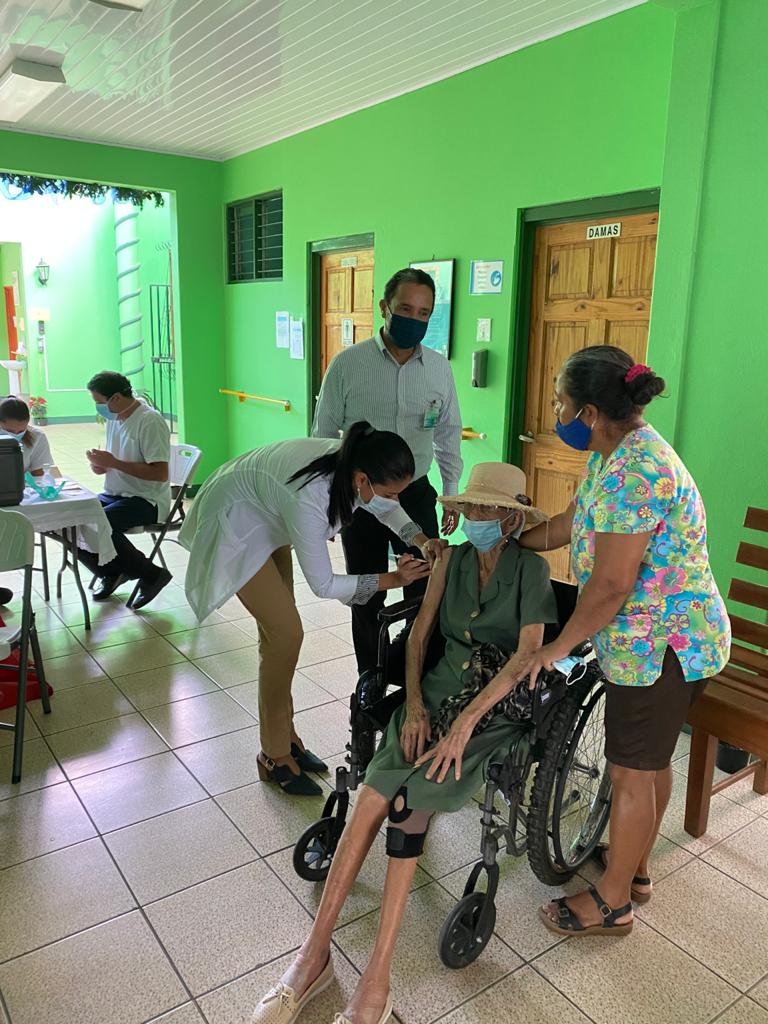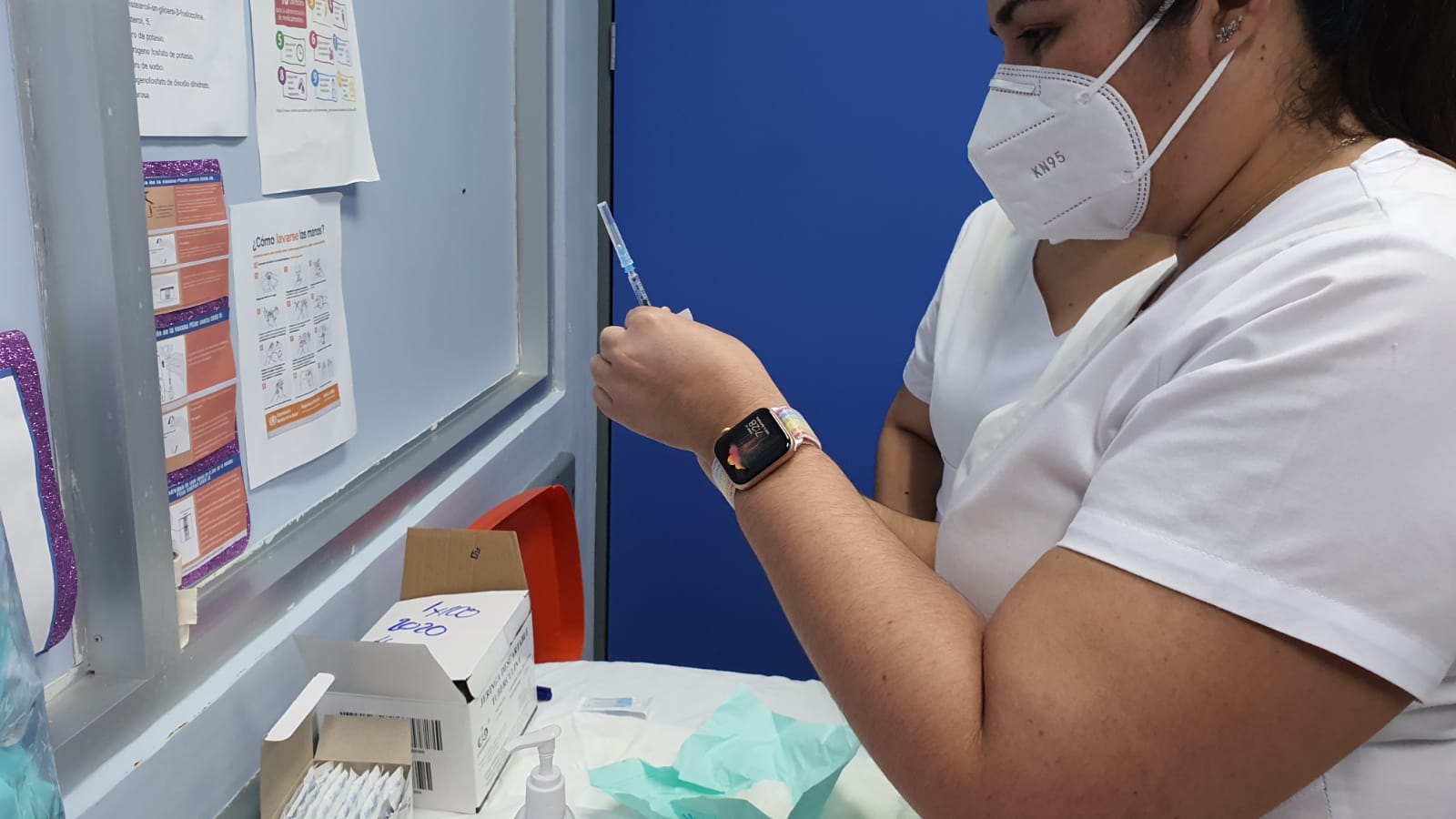
The 14 health areas that make up the Chorotega Region began vaccinating employees in the first response against COVID-19. There are 14 because, in addition to the 11 cantons of Guanacaste and the district of Colorado in Abangares, Upala and Jicaral also belong to this region.
In fact, the Chorotega Region has administered the third highest number of vaccines in the country (3,264 doses), after the Central South Region (metropolitan area of San Jose and Cartago) and Central North (metropolitan area of Alajuela and Heredia).
Of course, the Costa Rican Social Security Fund (CCSS) still has to administer some 431,936 doses to reach the goal of number of people to be vaccinated in the region: 217,600 people, according to estimates based on data from CCSS, the National Institute of Statistics and Censuses (INEC) and provided by institutions such as the Red Cross, the Public Police Force and the Ministry of Health.
Most of the remaining people to be vaccinated belong to group two (people over 58 years of age) and group three (people between 18 and 58 years old with risk factors).
When Pfizer resumes shipping vaccines this month, CCSS will allocate 80% of them to group two, meaning the vaccine will finally be given to older adults in our communities.
The Voice of Guanacaste spoke with the coordinator of the CCSS Regional Immunization Commission, Dr. Diego Alfaro, to find out how the institution will guarantee that these vaccines reach every corner of Guanacaste under the required conditions.
Here is the interview edited slightly for space and accuracy:
The Voice: Do all the health centers around the province have the capacity in supplies and personnel to vaccinate against COVID-19?
Dr. Alfaro: Of course. Each of the places where vaccines are ordinarily given (hospitals, health areas, Ebais clinics and the primary care technicians and nursing assistants who make visits to the community) have equipment exclusively for vaccines: refrigerator, freezers, cold boxes and thermoses.
Logistics are already being organized both for making lists and for distributing the vaccine within each health area, in the Ebais clinics. As an initial strategy, people will be called to come to their assigned Ebais in an orderly manner, depending on the vaccination quota.
The Voice: In Guanacaste, many areas are very far from the Ebais clinics. Is it possible to take the vaccine to those people who can’t get to an Ebais, considering the refrigeration times required by Pfizer?
Dr. Alfaro: Yes, that’s why it has to be scheduled against a list. For example, if there are 10 vials one day, which is 60 doses [since six doses are extracted from each vial], then appointments will be scheduled for 60 people for the first day. Among those, there could be three, four or five people who need the vaccine taken to the place where they live. The primary care assistant team would go to that house to administer the vaccine.
The Voice: If necessary to guarantee the cold chain, have you thought about taking them by air to the most remote communities?
Dr. Alfaro: Each health area and Ebais needs to identify the people to be vaccinated from the most remote areas. There is a very good coverage from Ebais at the level of the entire region. Upala and Nicoya are among the most dispersed, and even Santa Cruz. They have Ebais clinics in areas very far from their care center, called the area headquarters.
For example, it’s very far from the center of Nicoya to Nosara, but there are Ebais clinics there; there are ATAPs (Primary Care Technical Assistants), and they have transportation, motorcycles, new vaccine equipment and thermoses.
Through funding from the National Vaccines and Epidemiology Commission of Costa Rica, between December of last year and January of this year, 49 new conventional cold chain equipment for vaccines were installed in the Chorotega Region, aside from the ultra-low temperature equipment that is pending. This has strengthened that aspect of keeping the cold chain in safe conditions.
The Voice: Do you know yet if any of the ultra-low temperature freezers will come to the region?
Dr. Alfaro: At the moment, two are scheduled. One will be at the Enrique Baltodano Briceño Hospital in Liberia and the other at the La Anexión Hospital in Nicoya. It’s expected that they’ll be able to come and install them in the last weeks of February.
The Voice: What would they contribute to the region?
Dr. Alfaro: The characteristic is that vaccines are stored at -70 degrees for six months. Although there is distribution capacity, as is being done weekly on Mondays, being able to have at least two of these [freezers] allows there to be greater storage and distribution capacity for vaccines within the region.

Photo: Courtesy of CCSS
The Voice: This week, CCSS communicated a series of recommendations to speed up contact with people in group two who don’t have updated information in the information systems. What happens to those who, due to mobility or internet access issues, can’t do this procedure?
Dr. Alfaro: At the moment, the ordinary process is for them to come to the validation office, but as you say, there may be cases due to distance, for economic reasons or for any other reason, an elderly person living alone who can’t travel a certain distance… In those cases, it would be good for them to look for a way to get information from Ebais by means of someone close to them, and there they will be given guidelines to effectively achieve this affiliation process in the institutional systems.
The Voice: Once scheduling begins, is it possible to reschedule the vaccination of someone who doesn’t come to their scheduled appointment?
Dr. Alfaro: Of course, there is that possibility. It’s not that they miss their turn. Even in the daily schedule, the possibility of administering that vaccine to another person is taken into consideration so as not to discard that vaccine.
The Voice: What happens if someone doesn’t get the second dose in 21 days?
Dr. Alfaro: There isn’t an exact answer to that question. At the time the case arises, they’ve been told to contact us and we’ll do a technical consultation at the central level to be given recommendations.
The Voice: Is there any special symptom when getting the vaccine?
Dr. Alfaro: The vaccine should be postponed if someone has COVID-19, if they have a health order due to being a contact or a case by nexus, if they are pregnant or if they have any illness with special treatment, such as receiving chemotherapy or if they are using a blood thinner or if they have an infectious disease, for example dengue.
The Voice: How many people in the region do you estimate will be vaccinated weekly?
Dr. Alfaro: It is projected that approximately 4,500 vaccines will arrive per week, with the current weekly distribution strategy and the quota scheduled per week. We have to see how many vaccines Pfizer is really going to give and how much is actually going to be able to be distributed.
The Voice: Could the figures change once vaccines from another manufacturer arrive?
Dr. Alfaro: Correct. The idea that approximately 4,500 weekly doses could arrive, and from there, they could also be for the first dose or to complete schedules with second doses.
Later it will probably be a little less because I was giving you data that includes the hospitals, but when the hospitals finish vaccinating their employees, they will no longer vaccinate. It would probably go down to 3,600 or 3,800 doses. And of course, it will also vary according to the possibility that Pfizer can give more vaccines or that another vaccine arrives.
The Voice: Is the distribution strategy the same regardless of whether it is the Pfizer vaccine or the Astrazeneca vaccine?
Dr. Alfaro: In that regard, we won’t know exactly what the way of working will be until they give us directions from the central level, until we get directions from them.
The Voice: Directions in what sense?
Dr. Alfaro: In all the technical aspects, that is, how the vaccine arrives in the country, how it is stored at the central level, how it is distributed, in how many tracts … Until those directions are organized at the central level, they’ll give us directions on how it works at the operational level. So far, the guidelines and directions are based on the specific characteristics of the Pfizer vaccine.





Comments